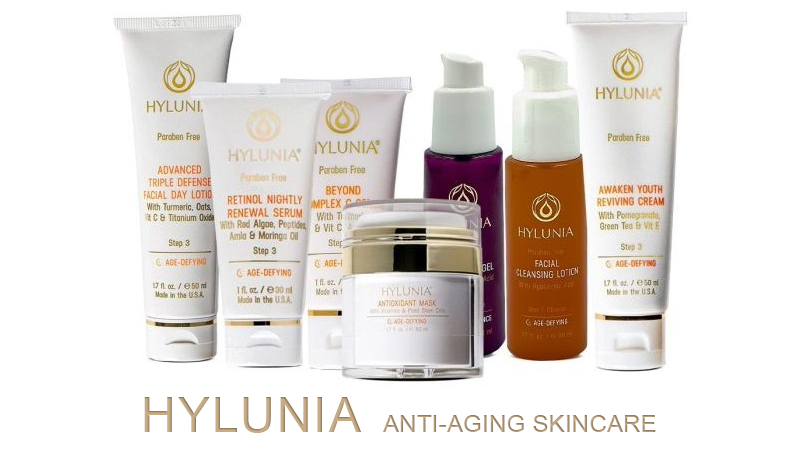
When it comes to reducing fine lines, the choices can feel endless—and often overwhelming. You’ve probably heard about serums and creams as go-to options, each with its own fan club in the skincare world. But which one truly delivers when it comes to smoothing those pesky fine lines? Understanding the strengths and roles of serums and creams can help you choose the best product for your needs, so you’re not left wondering if you’re wasting your time (or money) on the wrong one.
Contents
Understanding the Difference: Serums vs. Creams
First things first—what’s the actual difference between a serum and a cream? It’s not just a marketing gimmick; these products have distinct formulations and purposes. Serums and creams target the skin differently, each bringing unique benefits to the table.
What Makes Serums Unique?
Serums are lightweight, highly concentrated formulas designed to penetrate deep into the skin. They’re like the power-packed athletes of the skincare world, delivering a high dose of active ingredients directly to where they’re needed most. Serums are usually water-based or gel-based and are formulated with smaller molecules, allowing them to sink into the skin quickly and reach deeper layers. This makes them ideal for tackling specific issues like fine lines, dark spots, or uneven skin tone.
The Strengths of Creams
Creams, on the other hand, are thicker and richer, made to sit on the skin’s surface and lock in moisture. They have larger molecules, which means they don’t penetrate as deeply as serums. Instead, creams create a protective barrier that helps prevent water loss, keeping the skin hydrated and soft. This makes them great for smoothing and plumping the skin’s surface but not always for delivering potent anti-aging ingredients deep into the skin’s layers.
In other words, think of serums as the specialist, getting right to the problem, while creams act as the bodyguard, protecting your skin’s outer layer and keeping it moisturized.
Targeting Fine Lines: Where Serums Excel
Fine lines are often the first sign of aging that people notice, typically appearing around the eyes, mouth, and forehead. These lines form due to a combination of factors, including collagen loss, dehydration, and environmental damage. Because serums are formulated with high concentrations of active ingredients, they’re often the top choice for directly addressing these issues.
Key Ingredients in Serums for Fine Lines
- Retinol: Known as the “gold standard” for anti-aging, retinol promotes collagen production and speeds up cell turnover, which helps reduce fine lines.
- Hyaluronic Acid: While it doesn’t directly target collagen, hyaluronic acid is a humectant that draws moisture to the skin, plumping it up and making lines less visible.
- Vitamin C: This powerful antioxidant protects skin from free radical damage and supports collagen production, helping to smooth out fine lines.
Serums containing these ingredients can work wonders by delivering them directly to the deeper layers where fine lines start to form. They work to repair, hydrate, and protect the skin, making serums a clear winner for targeting early signs of aging.
When to Apply Serum for Best Results
To get the most out of your serum, apply it to clean skin, preferably after cleansing and toning. This allows the serum to absorb better and penetrate the skin more effectively. A few drops are usually all you need, as serums are highly concentrated. Pat it gently onto your face and allow it to fully absorb before moving on to your moisturizer.
Why Creams Still Play a Crucial Role
While serums are effective at targeting fine lines, creams have their own important role in an anti-aging routine. Skin needs hydration and a protective barrier to keep it smooth and supple, and that’s where creams come in. Creams, especially those formulated for anti-aging, provide ingredients that help maintain skin’s moisture levels, which in turn can reduce the appearance of fine lines on the surface.
Moisturizers with Anti-Aging Ingredients
Some creams are formulated with additional anti-aging ingredients, making them more than just moisturizers. Look for creams with ingredients like:
- Peptides: These amino acid chains help stimulate collagen production and support skin structure.
- Niacinamide: Also known as vitamin B3, niacinamide strengthens the skin’s barrier, helps with moisture retention, and has anti-inflammatory benefits.
- Antioxidants: Ingredients like green tea extract or coenzyme Q10 help fight free radicals, which damage collagen and lead to fine lines.
These added ingredients help to not only hydrate the skin but also provide some anti-aging benefits, especially for those who need an extra layer of defense against dryness and environmental stressors.
Combining Serums and Creams: The Power Duo
The best part? You don’t actually have to choose between serums and creams. In fact, combining them can give you the best of both worlds. Serums can work on a deeper level to tackle fine lines directly, while creams provide hydration and lock in all those active ingredients, maximizing their effectiveness.
How to Layer Serums and Creams
The general rule of thumb is to apply products from the thinnest to thickest consistency. This means applying your serum first, followed by your cream. Here’s a simple routine to follow:
- Step 1: Cleanse your face to remove any dirt or makeup.
- Step 2: Apply a toner if you use one, to prep the skin.
- Step 3: Pat on a few drops of your serum, focusing on areas with fine lines.
- Step 4: After the serum absorbs, apply a moisturizer to seal in the serum and provide a protective layer.
By layering these two products, you’re essentially giving your skin a one-two punch against fine lines—targeting them at the source with a serum and keeping the surface hydrated and smooth with a cream.
Choosing the Right Product for Your Skin Type
Your skin type plays a big role in determining which product will work best for you. Some people with oily skin may prefer serums, while those with dry skin might gravitate toward creams. Here’s a quick breakdown:
Oily or Acne-Prone Skin
Serums are often the better choice for oily or acne-prone skin, as they’re lightweight and don’t clog pores. Look for oil-free formulas and ingredients like hyaluronic acid for hydration without the heaviness of a cream.
Dry or Sensitive Skin
If your skin tends to feel dry or tight, a cream may be essential for keeping it comfortable. Choose a rich, hydrating cream with soothing ingredients like peptides or ceramides to support the skin’s barrier and keep it soft.
Combination Skin
For combination skin, layering a serum with a lightweight cream can give you the benefits of both without overwhelming your skin. Use a serum with hydrating properties and a cream that’s not too heavy to avoid clogging pores.
The Final Verdict: Which is Better?
When it comes to targeting fine lines, serums have the edge for direct, deep treatment thanks to their potent, fast-absorbing formulas. But creams shouldn’t be underestimated; they’re essential for locking in moisture and supporting the skin’s outer layer. If you’re serious about minimizing fine lines, using both is your best bet. Think of them as a skincare team—serums for strength, creams for support.
At the end of the day, the right choice comes down to your unique skin needs and preferences. Experiment with different products, pay attention to how your skin responds, and build a routine that feels right for you. Fine lines may be inevitable, but with the right products, you can take them on with confidence.

